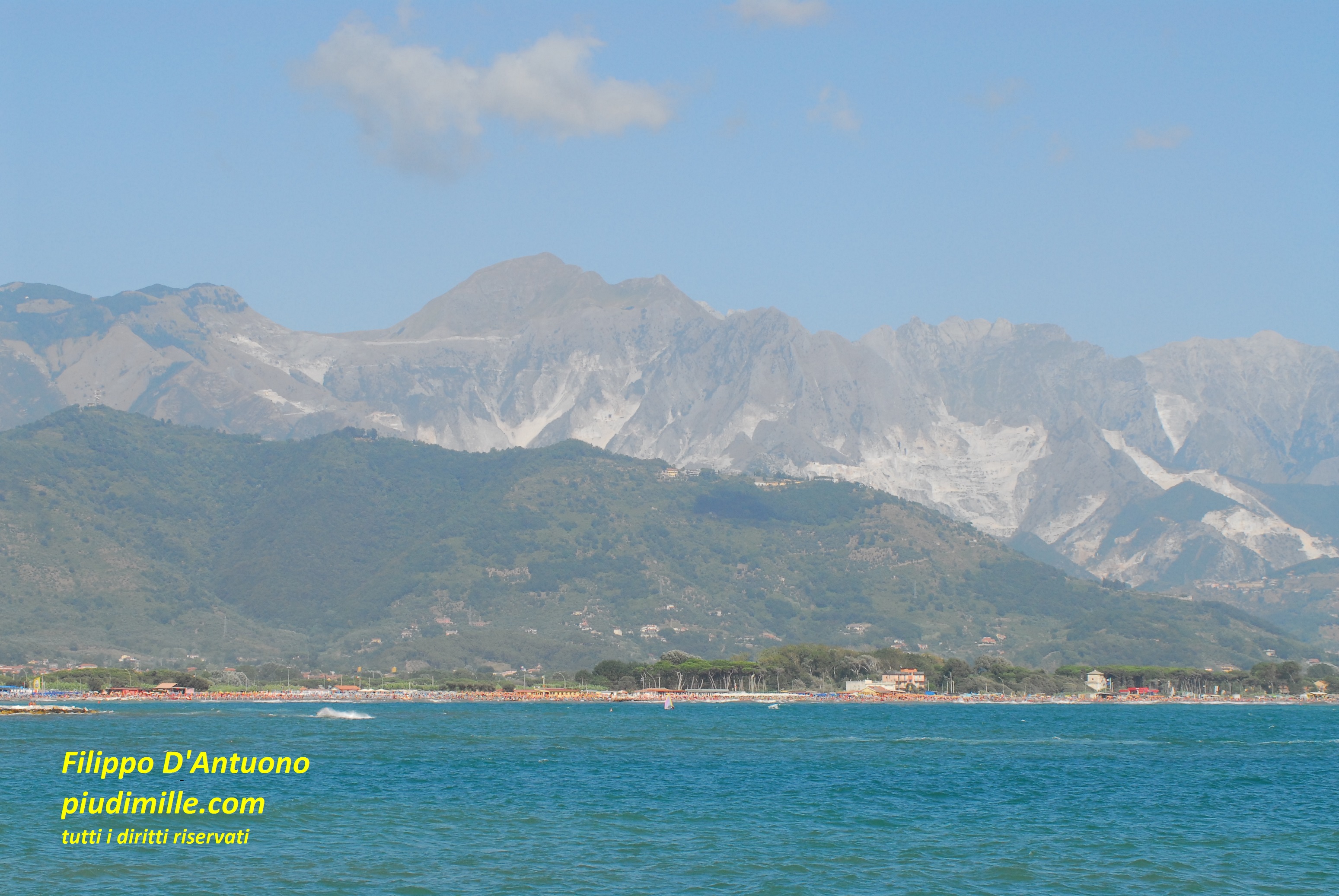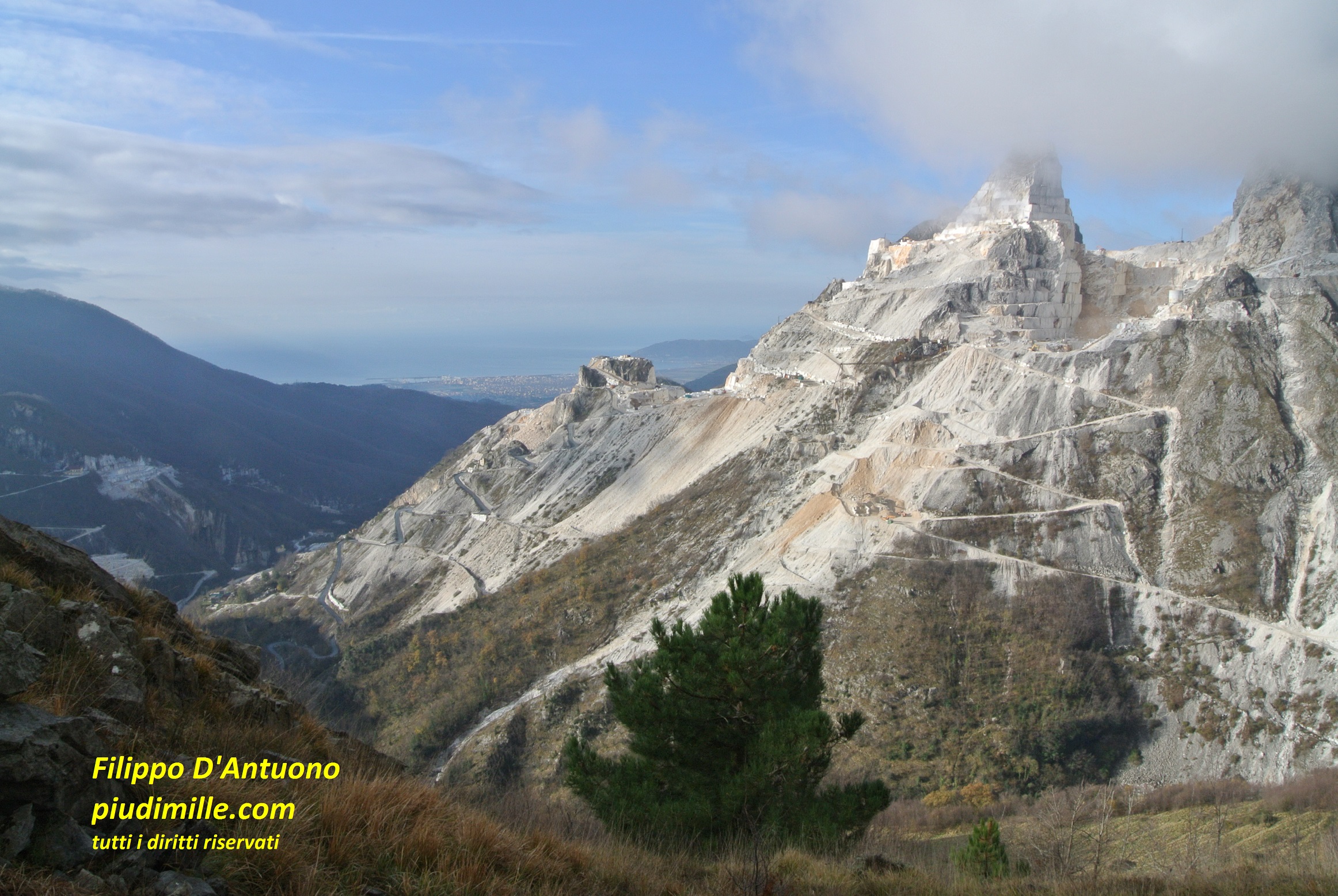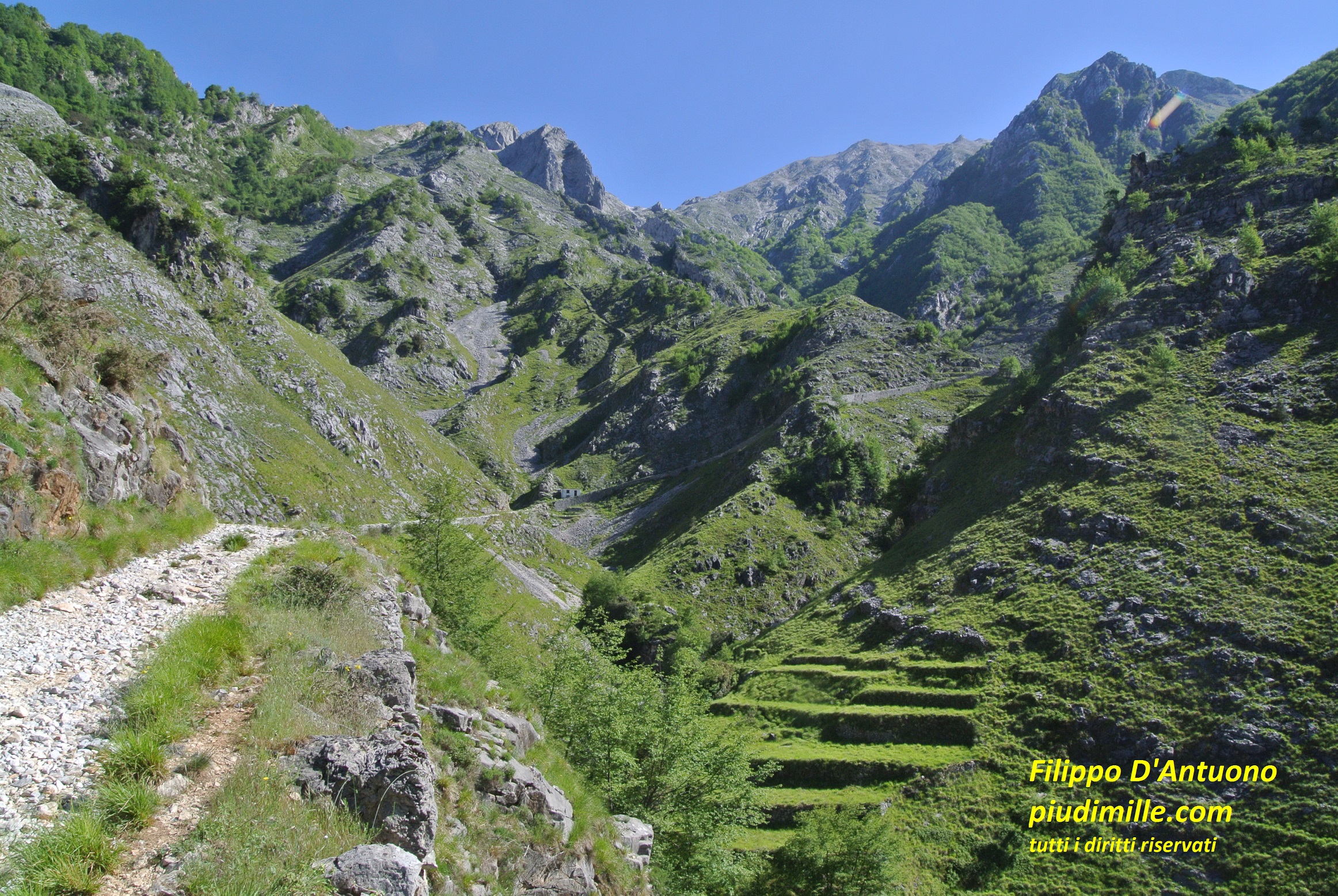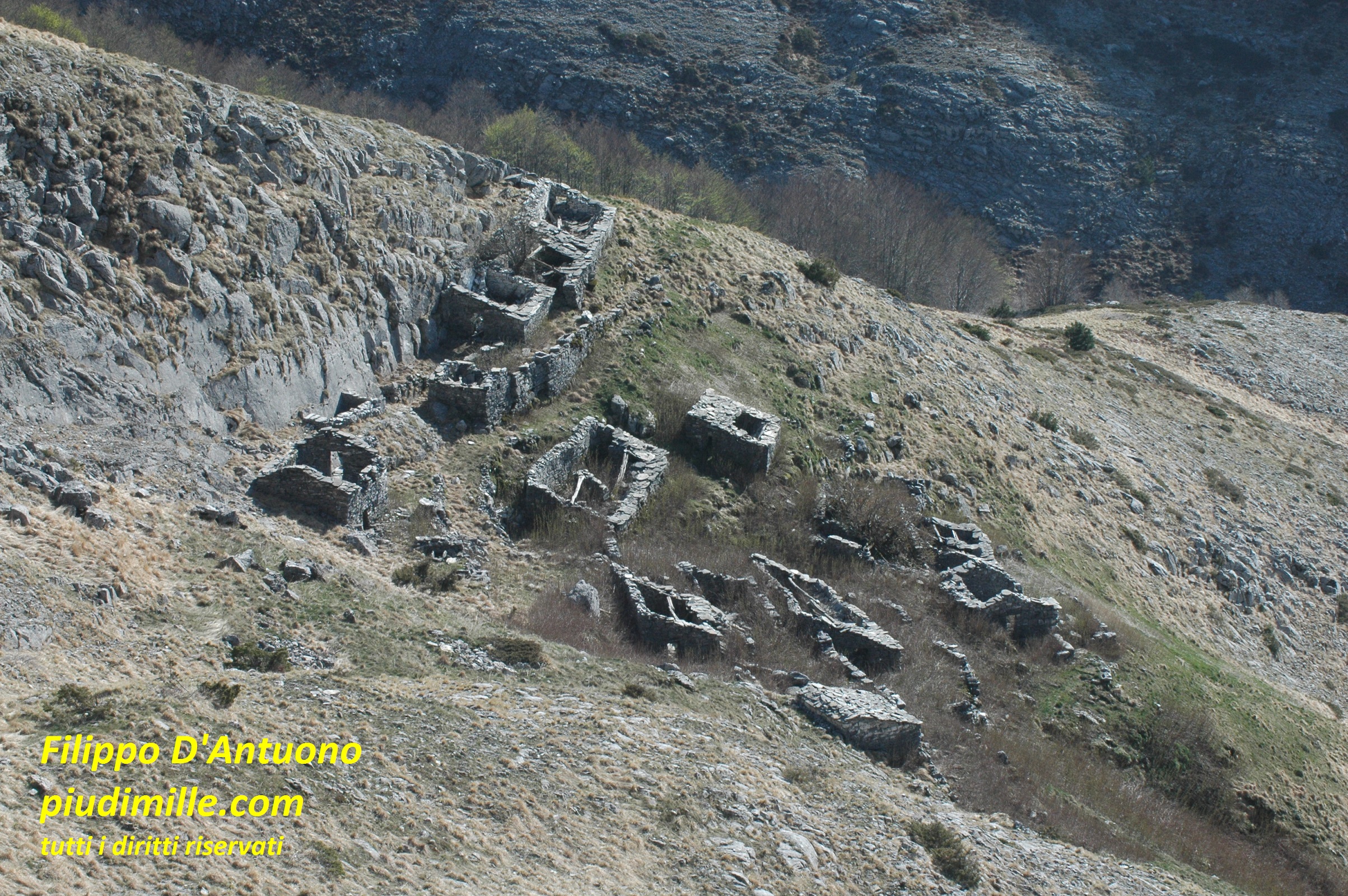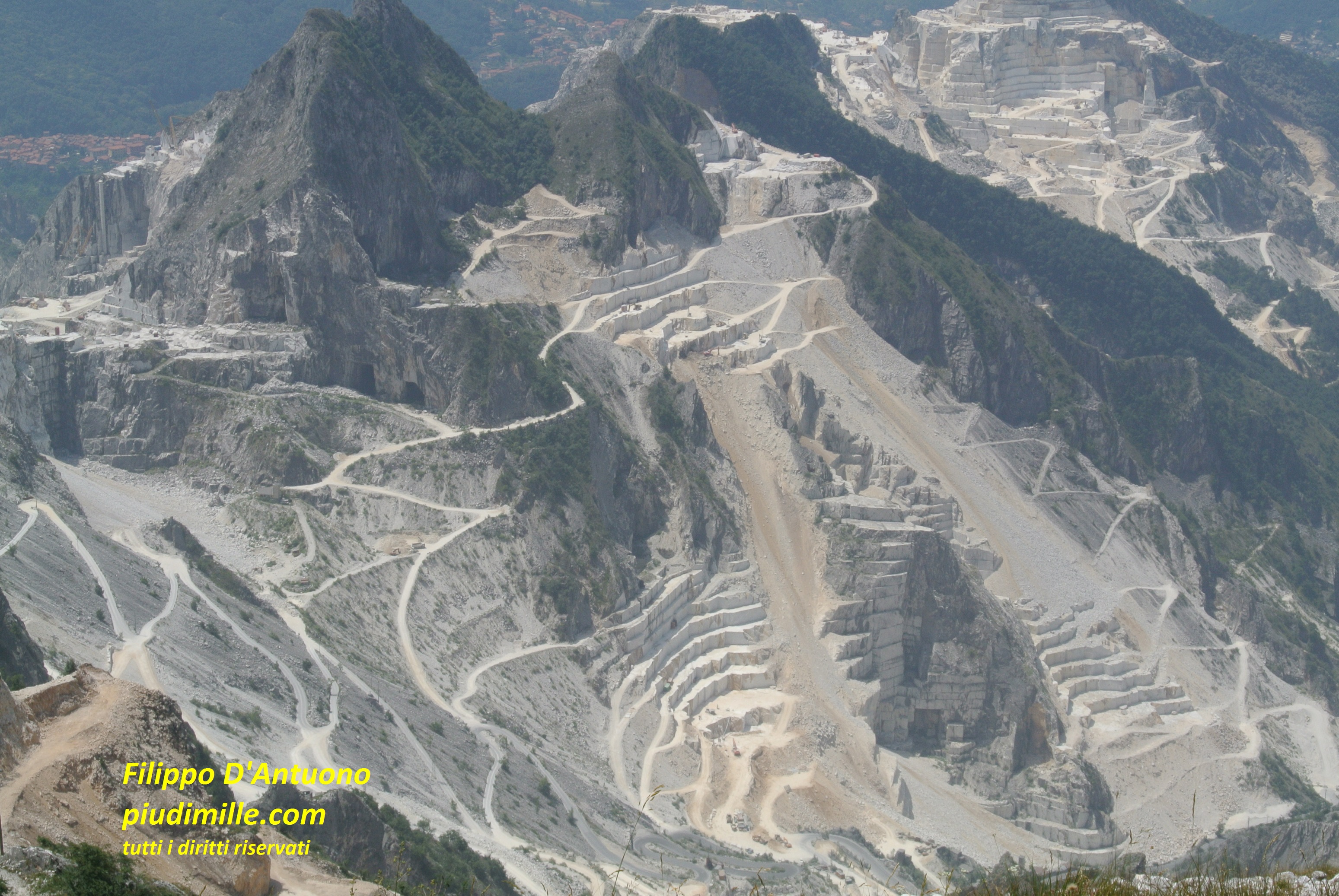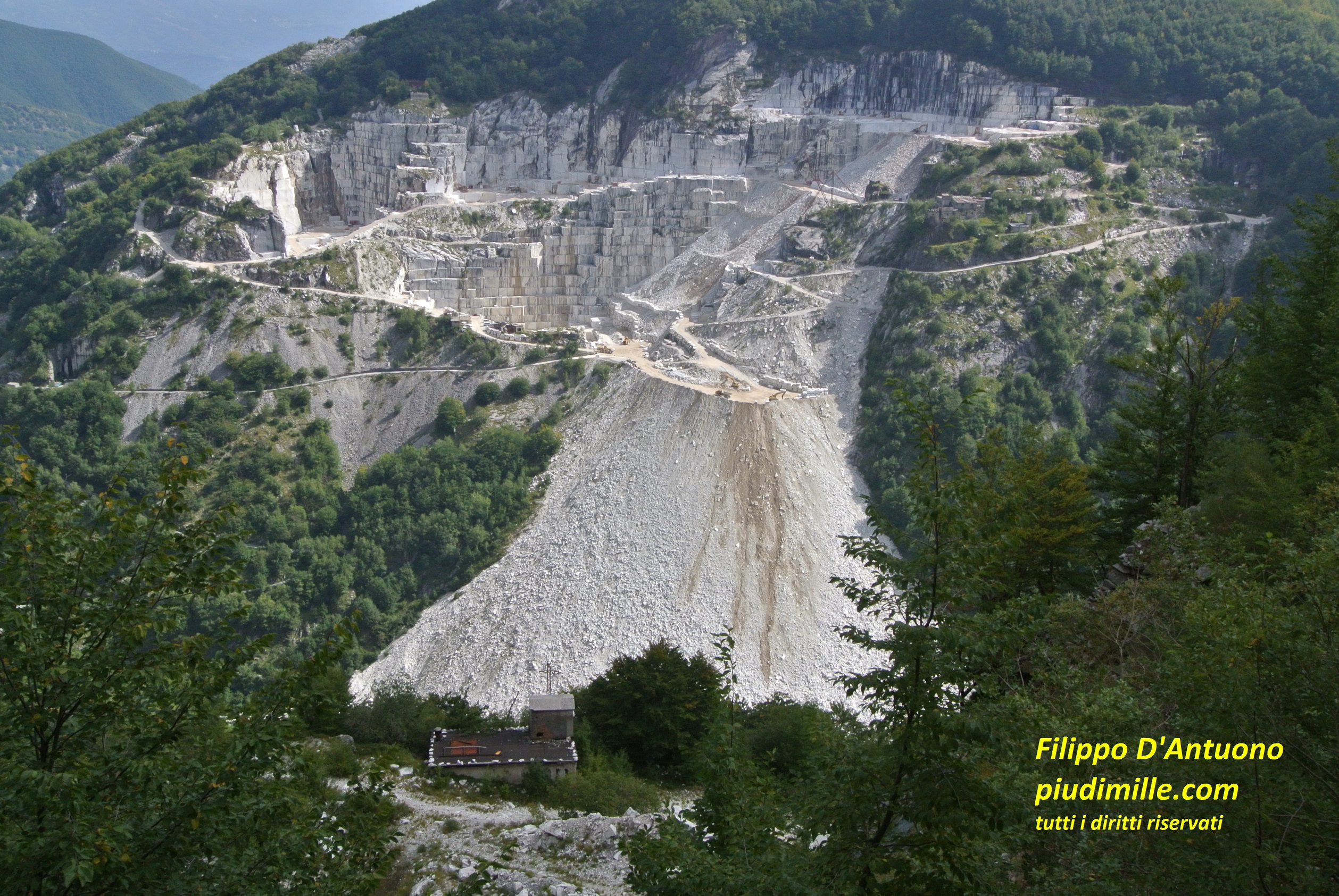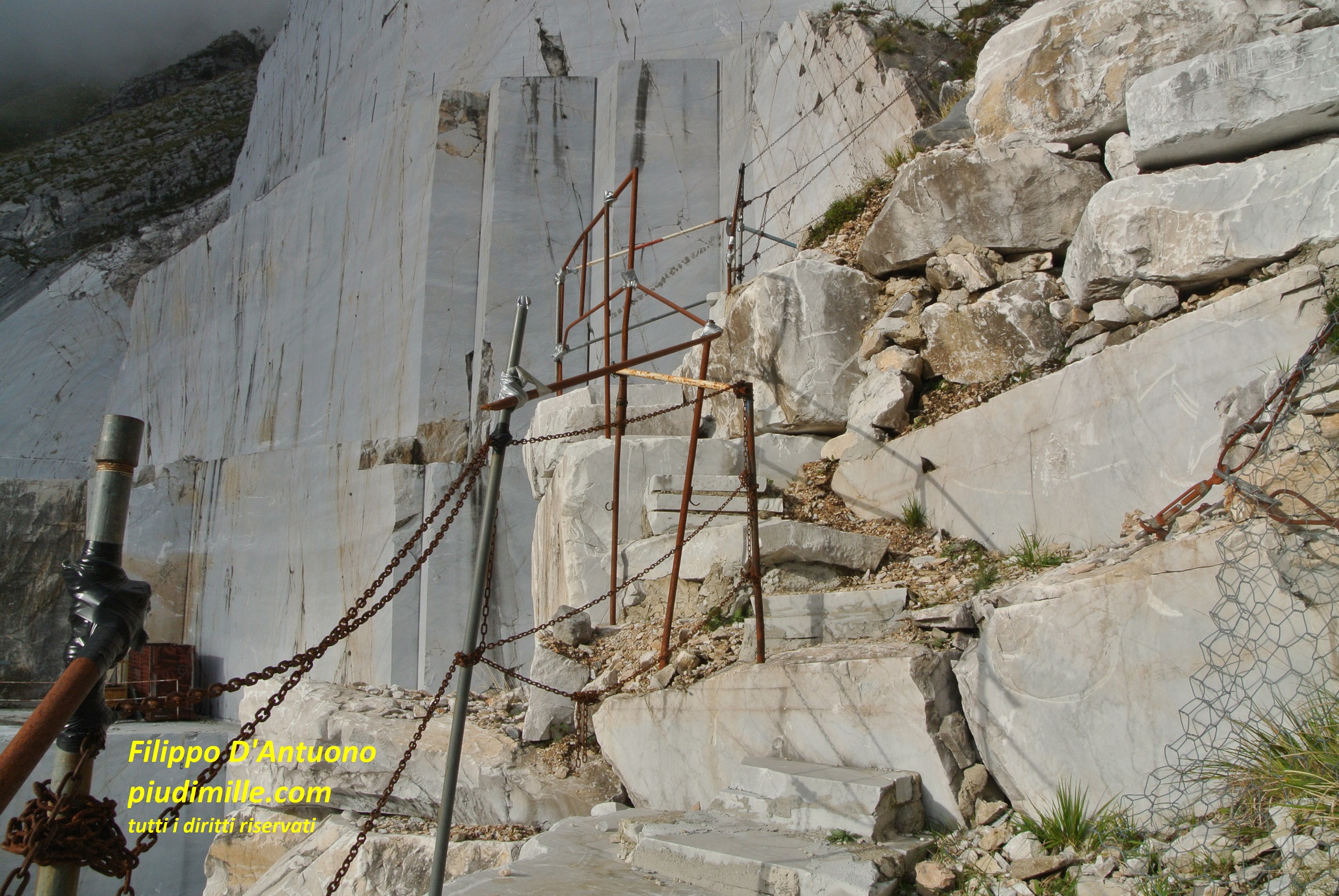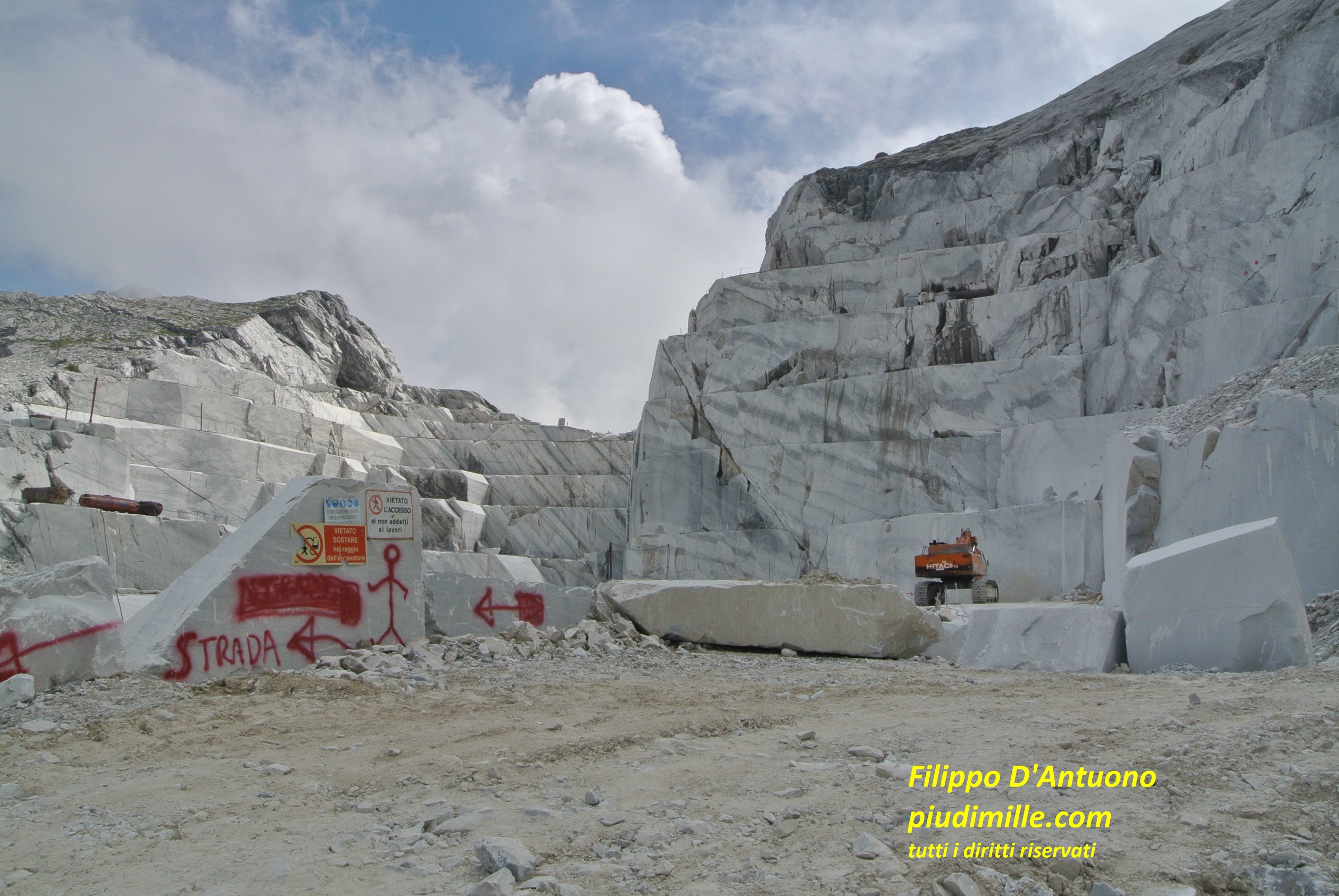Apuanian Alps and marble quarries
Apuanian Alps and marble quarries
April 4, 2014
An animated discussion about the environmental impact of marble quarries in the Apuanian Alps is taking place since quite a time. I have to confess that I am not a diligent follower of it, especially in the part dealing with laws, regulations and constraints, and their real application. So I will write following my sensations and little experience, as I use to do.
I’ve been hiking the Apuanian Alps since almost 40 years. And I see them from Bocca di Magra coastline since 50. They changed quite a lot, for several reasons, among which the more visible are the effects of marble quarries.
I never saw the Apuanian Alps earlier, for a matter of age. But an idea of what they were can be derived from the several expositions on the territory and the several books and guidebooks that were written about this group of mountains. And, even better, listening to somebody who worked in the marble quarries, as they once were, and is willing to speak about life; not only about tragic events, that are amply reported in commentaries and books.
Well to come to the point. A still handsome eighty year old local, when he was a young man used to walk all the way from his home village of Vinca to the Colonnata quarry basin, at the beginning of the week, with all kind of weather. Why? Because there there was work year-round. Was he a quarry-man ? Also this. And, when he was back during the week end, he had to help father bringing sheep herds to graze the slopes of Pizzo d’Uccello, then went to quarry again. Many tales he told, also of sheeps drawing him home when the fog was so thick to fade any view.
Why could not he be only a shepherd ? Since, already at that times, life was changing; the economy was not closed anymore and money was needed. Sheep breeding on the Apuanian Alps was not enough. And not even agriculture.
Moral of the story: quarries meant work and resources. So, all right ? And here comes something that I cannot communicate to its real end. Better if you have been there. The Apuanian Alps are scattered with small old-time quarries, exploited then abandoned. Also sited at the end of old “lizza” ways of such a size that the quarries themselves are almost dwarfed. So, a lot of work to get to the marble and little material removed. The “lizza” ways that are still there are by far more visible than the quarries they served. The reasons of this ? A lot, that I cannot fully explain; you may find good analyses in published materials; it was because of a combination of technical, economic, social and market reasons. And further, at that times quarries, grazing, and agriculture could stay together.
One fact is for sure: nowadays this kind of marble exploitation is not applicable anymore. It would be like pulling a plough with an donkey. Now you must remove a lot of material, with respect to the accessory structures; reduce costs, especially of labour and introduce economy of scale. So, open big quarry fronts and remove as much material as possible, also thanks to technologies allowing to literally cut mountains into slices, so to extract a lot of intact marble blocks. The blocks are not anymore transported down creeping on the lizza ways, but on trucks. And, for this, suitable tracks are needed, that are built winding on the mountain sides.
The result is however what we now see: mountains cut into slices and giant debris discharges; the latter are probably relatively less than the amounts produced with the old exploitation systems; however much more in absolute amount, because of the size of the present time quarries. Then, enormous amounts of dusts, one of the worst pollutants of quarries.
The present debate is the same as ever. What is more important ? The environment, often referred to as simply “landscape”, at one side. Or economy, on the oher ? Moreover, in a period in which economy is in deep difficulty and what seemed to be not possible anymore may become possible again; a hazard of regression.
Who says that marble quarries exist since ever, tells a half truth. Ok, but not the present time quarries. Besides the amount of extracted materials, other things have a permanent impact, like the enormous debris discharges created by throwing the remains down the slopes by means of bulldozers. It would be certainly the case of finding different systems, also paying some fee to profit.
How is the balance between the money generated by quarries and by agricultural, pastoral and hiking activities ? From a point of view of the mere current money flux, I am afraid that there is no story. But, as usually, the comparison of today’s incomes with tomorrow’s earnings (or losses) is quite problematic.
Marble will be regenerated, (all materials follow a cycle), in geological ages but, for sure the present human species will not see the new marble. So we must consider marble as non-renewable; and the same the Apuanian Alps that also are not only marble.
Then, who are the beneficiaries of marble quarrying ? And here the thing is more complex, even if potentially more interesting. There are questions to which I have no answers. Which is the impact of the Apuanian Alps on the touristic income, both referring to hiking tourism and to tourism connected to quarrying ? Which is the impact, either positive or negative, of the changes and destructions operated by the quarries ? How many people are directly employed in the quarry work, and who they are? Many quarry truck drivers do not look exactly as locals. And how many people are working in the quarry related industries ?
Who are the marble buyers ? For as little relevant it could be from and economic point of view, maybe that we are dismantling the Apuanian Alps to build palaces in the Arabic peninsula or in some other place of new (or old) rich ?
Finally, have a careful look in the territory of natural parks, not only and not specifically the one of the Apuanian Alps. Is it normal that wall drawings of the type “park corrupted” or “thieves” are so common ? Consider that for a park this should not be. And this is not only the fruit of anti-environmentalist propaganda; often these drawing come straight and sincerely from the heart of locals.
May be that administrators gave a substantial contribution in creating a negative attitude of local populations? That, beyond the screen of a park they have been occupied in formally nice things, for their visibility, but not really coherent with their functions ? That they took profit of their positions, creating other bureaucratic structures managing a range of different things, and leaving the clean and transparent management a bit in the background ? And that now, to stay afloat, they are too much prone to compromise ?
Of course the Apuanian Alps deserve conservation and the present way it seems to be quite a challenge, if everybody does not do his part. There are some positive clues. If you roam the Apuanian Alps, in some quarry areas, you will find signs allowing to follow the path that would have been otherwise cleared away. This is a very small thing, but this also means that an agreement was found between quarry managers and some local management or control body; otherwise, be sure, these paths would have been simply cancelled. An agreement built, however, with a boundary in mind. And here comes the point: find boundaries, then stay within these. In this way, it is also possible to imagine what to do when the marble stock will be exhausted, and be prepared; as a matter of fact, early or later, marble will be finished, so the problem will materialise, anyway. To establish now a limit, likely different from the present one, may also allow that something will be left, once the marble is exhausted; and that, during this time, a more balanced situation between different activities can be established.
And, without the need of creating false information about Apuanian Alps landscape. A friend of mine with whom I went hiking facing one of the more visually impacting quarry areas, spontaneously told me that she was moved to cry; and she was not particularly informed nor personally particularly sensitive to environmental problems. It maybe that her sensibility suggested her of a immobile giant with no hope of escape, consumed by replete but merciless small beings.

